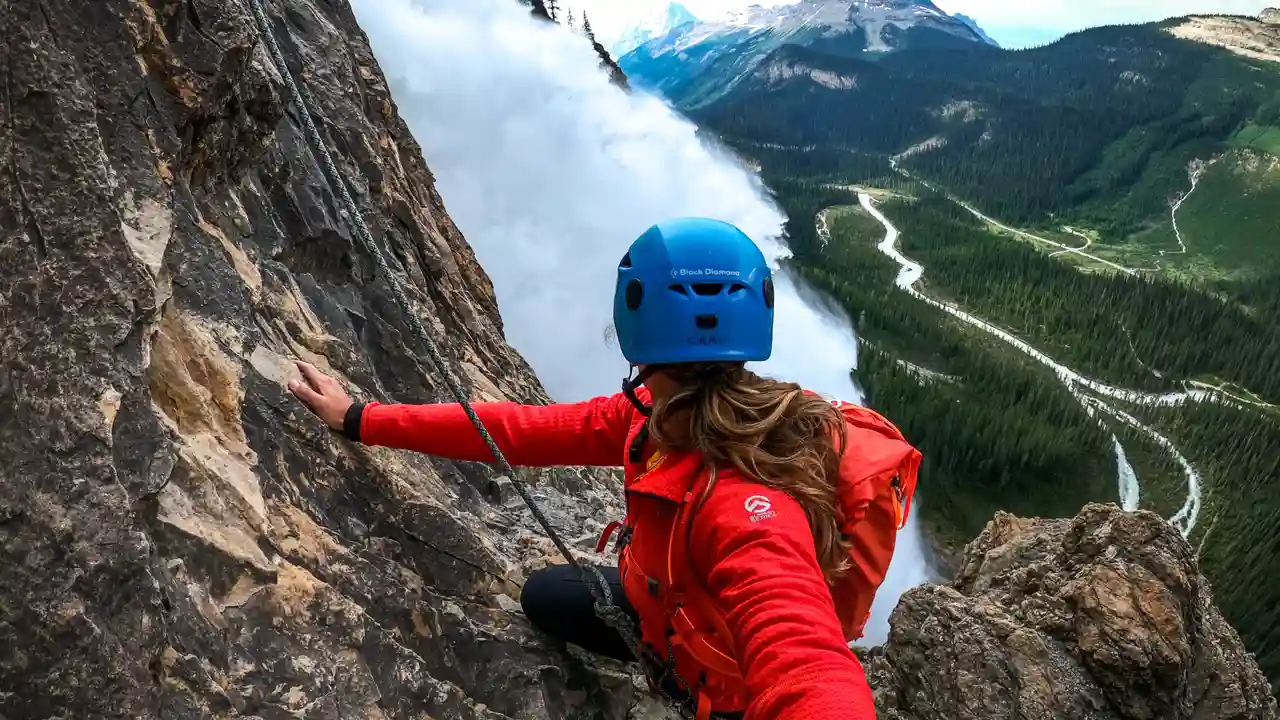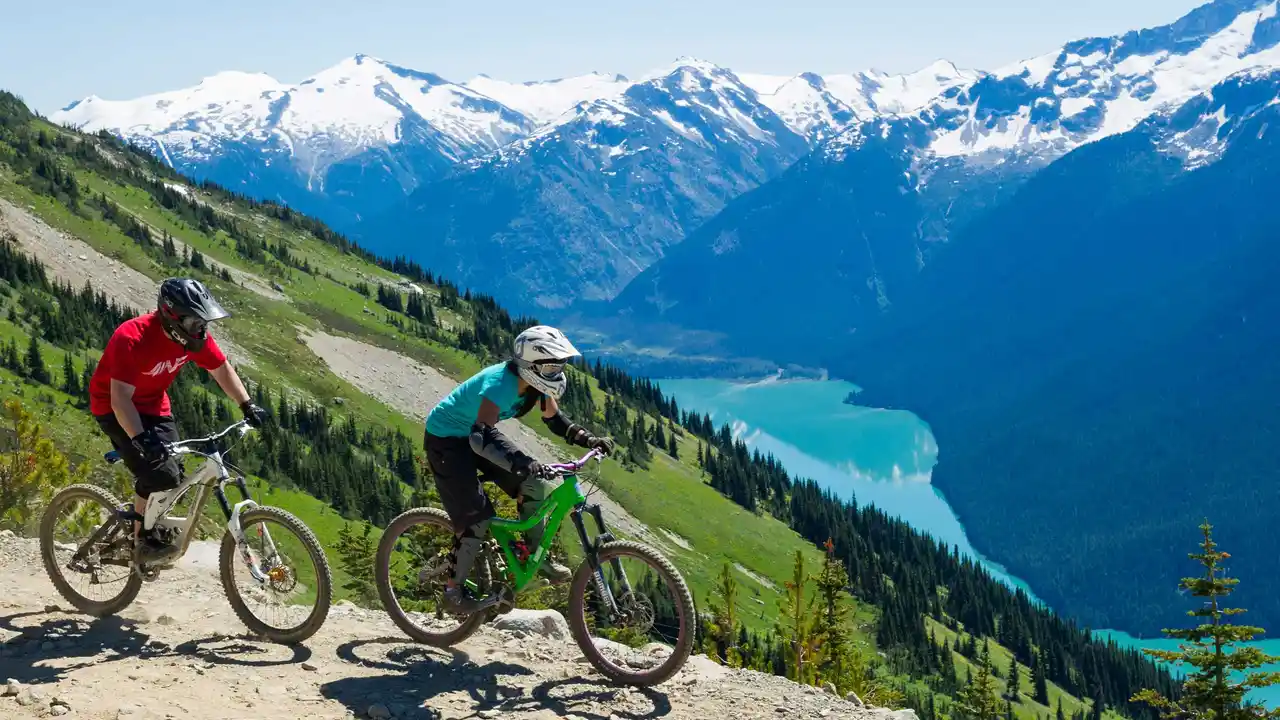Rock Climbing in Canada: A Guide for All Skill Levels

Explore Canada's diverse and challenging rock climbing scene! This guide covers climbing areas for all skill levels Discover the best crags and routes Experience the thrill of climbing in Canada
Introduction to Rock Climbing in Canada Canadian Climbing Destinations
So you're thinking about rock climbing in Canada? Awesome choice! Canada boasts some seriously incredible climbing spots from the rugged mountains of British Columbia to the granite cliffs of Ontario and even some hidden gems in the Maritimes. Whether you're a seasoned pro or a complete newbie Canada has something to offer every climber. This guide is designed to give you the lowdown on everything you need to know to get started or to plan your next climbing adventure including gear recommendations safety tips and of course the best places to climb.
Gear Up Essential Rock Climbing Equipment for Beginners and Experts
Before you even think about scaling a rock face you'll need the right gear. Here's a breakdown of essential equipment:
- Climbing Shoes: These are your direct connection to the rock. Look for a snug fit but not so tight that they're painful. Beginner shoes tend to be flatter and more comfortable while advanced shoes are more downturned for better grip on overhanging routes.
- Harness: A harness distributes your weight safely and provides attachment points for ropes and other gear. Make sure it fits snugly around your waist and legs.
- Belay Device: This device allows you to control the rope while belaying your partner. There are several types including assisted-braking devices which are great for beginners.
- Locking Carabiners: These are used to connect various pieces of gear. Always use locking carabiners for critical connections like attaching your belay device to your harness.
- Climbing Rope: This is your lifeline! Choose a dynamic rope that's appropriate for the type of climbing you'll be doing. Single ropes are most common for sport climbing while double or twin ropes are often used for trad climbing.
- Quickdraws: These are used to clip the rope to bolts on sport climbs. They consist of two carabiners connected by a short sling.
- Helmet: Protect your noggin! A helmet is essential for all types of climbing to protect against falling rocks and head injuries.
Product Recommendations and Comparisons
Let's dive into some specific gear recommendations with price ranges and usage scenarios:
Climbing Shoes
- La Sportiva Tarantulace (Beginner): A comfortable and affordable shoe perfect for beginners. Great for gym climbing and easy outdoor routes. (Price: $90-$110)
- Scarpa Origin (Beginner): Another excellent beginner shoe known for its comfort and durability. (Price: $95-$115)
- Five Ten Anasazi VCS (Intermediate/Advanced): A versatile shoe that performs well on a variety of rock types. A popular choice for experienced climbers. (Price: $160-$180)
- La Sportiva Solution Comp (Advanced): A high-performance shoe designed for steep overhanging routes and bouldering. (Price: $200-$220)
Harnesses
- Black Diamond Momentum (Beginner): A comfortable and adjustable harness ideal for beginners. (Price: $70-$90)
- Petzl Corax (Intermediate): A versatile harness with adjustable leg loops and comfortable padding. (Price: $80-$100)
- Arc'teryx AR-395a (Advanced): A lightweight and durable harness designed for alpine climbing and long routes. (Price: $150-$180)
Belay Devices
- Black Diamond ATC-XP (Beginner): A simple and versatile belay device perfect for beginners. (Price: $20-$30)
- Petzl GriGri (Assisted-Braking): An assisted-braking belay device that provides extra security and is great for beginners. (Price: $110-$130)
- Edelrid Mega Jul (Versatile): A versatile belay device that can be used for belaying rappelling and assisted braking. (Price: $40-$60)
Safety First Essential Rock Climbing Safety Tips
Rock climbing is an inherently dangerous activity but you can significantly reduce the risks by following these safety tips:
- Take a Climbing Course: This is the best way to learn the basics of climbing and belaying from a qualified instructor.
- Always Double-Check Your Knots: Before you start climbing make sure your knots are tied correctly and securely.
- Communicate Clearly with Your Partner: Use clear and concise commands when belaying such as "On belay" "Belay on" and "Take."
- Always Wear a Helmet: Protect your head from falling rocks and head injuries.
- Be Aware of Your Surroundings: Watch out for loose rocks and other hazards.
- Don't Climb Beyond Your Ability: Start with easier routes and gradually progress to more challenging ones.
- Check the Weather Forecast: Avoid climbing in inclement weather.
- Never Climb Alone: Always climb with a partner.
- Inspect Gear Regularly: Check your gear for wear and tear and replace it when necessary.
- Know Your Limits: Don't push yourself too hard especially when you're tired.
Top Rock Climbing Destinations in Canada
Now for the fun part! Here are some of the best rock climbing destinations in Canada:
Squamish British Columbia
Squamish is a world-renowned climbing destination located just north of Vancouver. It's known for its granite cliffs stunning scenery and a wide variety of climbing routes from beginner-friendly slabs to challenging multi-pitch climbs. The Chief is the iconic landmark a massive granite monolith that offers some of the best climbing in the area.
Canmore Alberta
Located in the heart of the Canadian Rockies Canmore offers incredible climbing opportunities amidst breathtaking mountain scenery. There are numerous crags in the area with routes for all skill levels. Grassi Lakes and Grotto Canyon are popular spots for sport climbing while the surrounding mountains offer excellent alpine climbing.
Lake Louise Alberta
Another gem in the Canadian Rockies Lake Louise is famous for its stunning turquoise lake and towering mountains. While it's more known for hiking and skiing there are also some excellent climbing areas nearby including Back of the Lake and Guides Rock.
Bon Echo Provincial Park Ontario
Bon Echo is a popular climbing destination in Ontario known for its towering Mazinaw Rock a massive granite cliff that rises 100 meters above Mazinaw Lake. There are numerous climbing routes on the rock ranging from easy to difficult.
Orient Bay Ontario
Orient Bay is another excellent climbing area in Ontario located near Thunder Bay. It's known for its challenging crack climbs on solid granite. This area is more suited for experienced climbers.
Val-David Quebec
Val-David is a charming town in Quebec known for its beautiful scenery and excellent rock climbing. There are numerous crags in the area with routes for all skill levels. Mont King is a popular spot for sport climbing while the surrounding mountains offer excellent trad climbing.
Cape Enrage New Brunswick
For a truly unique climbing experience head to Cape Enrage in New Brunswick. This coastal climbing area offers stunning views of the Bay of Fundy and the chance to climb on sea cliffs. The climbing here is more adventurous and requires some experience.
Types of Rock Climbing in Canada
Canada offers a variety of climbing styles to suit different preferences and skill levels:
Sport Climbing
Sport climbing involves climbing routes that are protected by pre-placed bolts. This style of climbing is generally considered to be safer than trad climbing as the climber doesn't have to place their own protection. Sport climbing is popular in areas like Squamish Canmore and Val-David.
Trad Climbing
Trad climbing or traditional climbing involves placing your own protection as you climb. This style of climbing requires more experience and skill as you need to be able to assess the quality of the rock and place your protection securely. Trad climbing is popular in areas like Squamish the Bugaboos and the Canadian Rockies.
Bouldering
Bouldering involves climbing short challenging problems without ropes. Bouldering is a great way to improve your strength and technique. Popular bouldering areas in Canada include Squamish and the Niagara Glen.
Alpine Climbing
Alpine climbing involves climbing mountains that are covered in snow and ice. This style of climbing requires specialized equipment and experience. The Canadian Rockies are a popular destination for alpine climbing.
Ice Climbing
Ice climbing involves climbing frozen waterfalls or ice formations. This style of climbing requires specialized equipment such as ice axes and crampons. Popular ice climbing destinations in Canada include Canmore and Banff.
Planning Your Rock Climbing Trip to Canada
Here are some tips for planning your rock climbing trip to Canada:
- Choose Your Destination: Consider your skill level and the type of climbing you want to do. Research different climbing areas and choose one that suits your needs.
- Book Accommodation: Book your accommodation in advance especially if you're traveling during peak season. There are numerous options available from campsites to hotels.
- Obtain Climbing Permits: Some climbing areas require permits. Check the regulations for the area you're planning to climb in.
- Pack Appropriately: Pack all the necessary climbing gear as well as appropriate clothing for the weather conditions.
- Check the Weather Forecast: Check the weather forecast before you head out climbing. Avoid climbing in inclement weather.
- Learn Basic First Aid: It's always a good idea to have basic first aid knowledge in case of emergencies.
- Respect the Environment: Pack out all your trash and leave no trace.
Beyond the Climb Exploring Canadian Culture and Scenery
While rock climbing is the main attraction don't forget to explore the Canadian culture and scenery! Many climbing destinations are located near charming towns and stunning natural attractions. Take some time to visit local museums sample Canadian cuisine and explore the surrounding landscapes. You might discover a whole new side to Canada that you never expected!
So what are you waiting for? Start planning your rock climbing adventure in Canada today! With its diverse climbing areas stunning scenery and friendly people Canada is the perfect destination for climbers of all skill levels.
:max_bytes(150000):strip_icc()/277019-baked-pork-chops-with-cream-of-mushroom-soup-DDMFS-beauty-4x3-BG-7505-5762b731cf30447d9cbbbbbf387beafa.jpg)






